Vembu BDR Suite » Offsite Copy/DR » Enabling Offsite Copy Management » Vembu Cloud DR (To Vembu Cloud) » Recovery » Restore File & Application Data » MS Exchange Server Restore
MS Exchange Server Restore
Your MS Exchange Server data that you have backed up from your NetworkBackup Client can be restored from the Vembu Cloud.
How to begin the restore process?
- Login to your Vembu CloudDR server and choose the Recovery tab. On the recovery page, click the Restore option beside the corresponding MS Exchange Server backup that is to be recovered. In case you are not able to identify it with the backup name, you can identify it with the plugin type from the plugin tab.
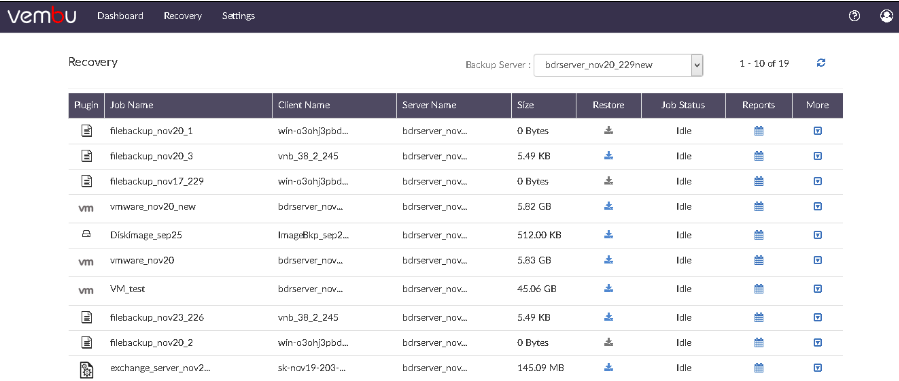
Step 1: Select Version and Files to Restore
- A tree listing various backup time-stamps with the full backup as its parent node will be displayed. This list that is generated is based on incremental and retention configured. In case an additional full backup is configured, then there will be more than one parent node list based on the configuration. The first step will be to select the restore version and click Next to proceed with the restore process.
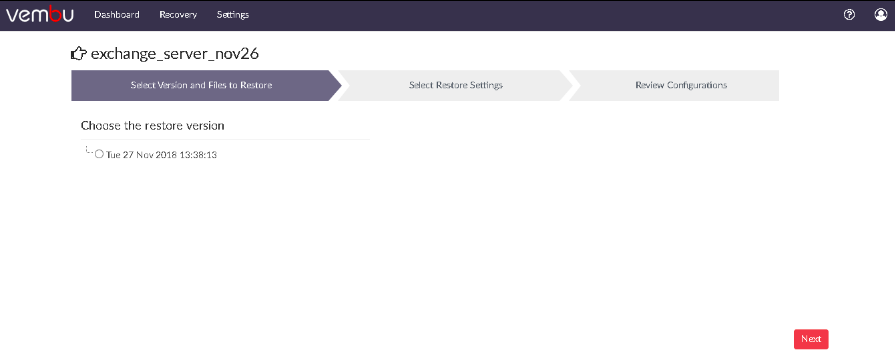
- Once done choosing the required time-stamp, proceed to select the backed up files/folders to restore.
- You can select files/folders in 3 ways. You can either:
- Select the root folder to proceed to restore the entire backed up data for the chosen time-stamp.
- Select specific files and folders alone based on requirement and proceed with the restore.
- Using the filter option, you can filter files by file types with extensions(Ex: *.doc). Filtering more than one file type can be done by separating them with a comma (Ex: *.doc, *.pdf, and so on). Proceed further by clicking Next.

Step 2: Select Restore Settings
- The next step in the restore process will be to configure the Restore Settings for the restore.
- You can encrypt the files that are being restored using the Encrypt Zip Files option. Provide the password and click Next to review configurations.
The password you enter should satisfy the following conditions:
|
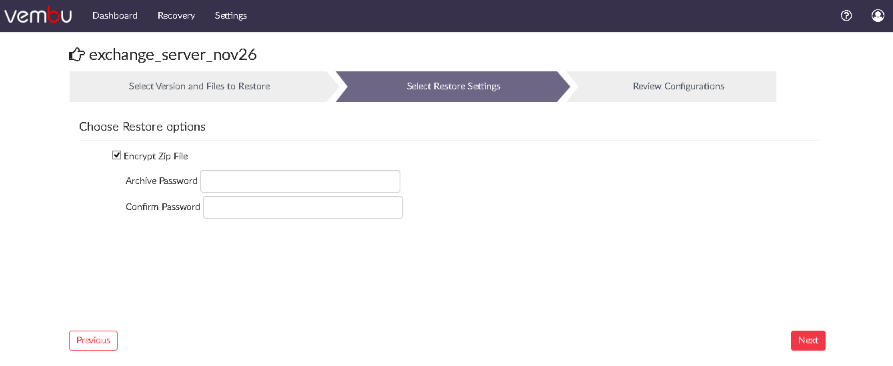
Step 3: Review Configurations
- You have reached the final step of the restore process wherein you have to review the configuration you have provided.
- Check the following:
- Restore Type
- Selected Restore Version
- Click Restore Now option. This will trigger the restore process. Review restore progress and make sure it gets completed successfully.
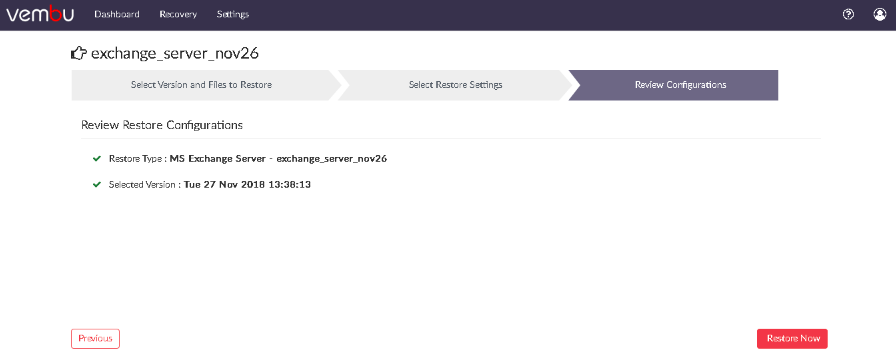
- Once you trigger the restore, you can track its progress from the restore progress tab. After being redirected to the Restore page, choose the inverted arrow mark in the status section to view the page displayed below.
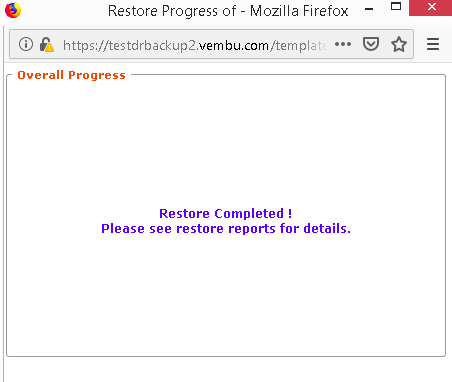
- The Restore Progress page consists of details such as:
- Backup Schedule: The name of the backup that is being restored
- User Name: The name of the client from which the backup was triggered
- Current File: The file that is being restored at the moment
- Total Files: The count of the total number of files that have to be restored
- Transfer Rate: The rate at which the restore is happening
- Files Restored: The count of the files that were restored successfully
- You can abort your restore if not required from the Abort (-) option available in that window. You will get a popup window, click OK to Suspend your restore.
To enhance your restore performance, close the progress window and open it only occasionally to check the restore progress |
- You can suspend your restore if not required from the Suspend option available in that window. You will get a popup window, click OK to Suspend your restore.
